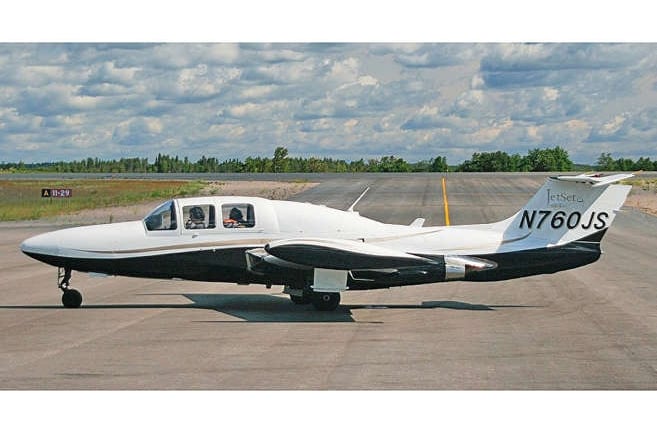How Much Income Do You Need to Own a Private Jet?
7/3/20255 min read


Understanding the Costs of Private Jet Ownership
Owning a private jet is often perceived as a luxury reserved for the affluent, yet it entails more than just the initial purchase price. The financial responsibility associated with private jet ownership is multifaceted and requires a comprehensive understanding of various costs involved in the operation and maintenance of such an aircraft.
Initially, the most significant expense is the purchase price, which can vary widely depending on the type and model of the jet. For instance, a light jet may be priced around $3 million, while a larger, long-range model could exceed $75 million. However, this is merely the beginning of the financial commitment. Apart from the purchase price, new owners must factor in ongoing maintenance expenses, which can include routine inspections, repairs, and compliance with regulatory requirements. Such maintenance can cost anywhere from $400,000 to over $1 million annually, depending on the jet's size and usage.
Insurance is another crucial aspect of private jet ownership. Annual premiums can range from $20,000 to $300,000, influenced by factors such as the jet's value, operational history, and coverage options. Furthermore, if the owner opts to hire a professional crew, crew salaries will add to the overall expense. Hiring a qualified pilot can require a budget of around $100,000 to $250,000 each year, plus benefits, which can substantially increase labor costs.
Additionally, hangar storage fees must be considered, especially for owners who wish to protect their jets from the elements. These fees can vary based on location and facility, averaging between $1,000 to $3,000 per month. Therefore, once the initial investment is made, the ongoing costs associated with private jet ownership can lead to a notably higher annual financial requirement. In summary, understanding these various costs is essential for anyone contemplating the ownership of a private jet, as it ensures preparedness for the substantial financial obligations that accompany such luxury assets.
Income Requirements for Different Types of Jets
When considering the purchase of a private jet, it is crucial to understand the income requirements associated with various categories of aircraft. Private jets are typically classified into three main tiers: light jets, mid-size jets, and heavy jets. Each tier has distinct price ranges and corresponding income prerequisites that prospective buyers should consider.
Light jets, often regarded as the entry-level option for private aviation, typically range in price from $3 million to $8 million. An individual or business looking to purchase a light jet, such as the Embraer Phenom 300 or the Cessna Citation M2, should ideally have an annual income of at least $500,000 to $1 million. This threshold ensures that the owner can comfortably manage acquisition costs, maintenance, and operational expenses. The initial purchase may be expensed by high-net-worth individuals or corporations, making ownership feasible.
Mid-size jets, which offer more capacity and range, usually fall within the $8 million to $20 million range. Popular models in this category include the Bombardier Learjet 75 and the Gulfstream G150. For these aircraft, the recommended annual income rises to approximately $1 million to $3 million. This level of income reflects the increased operating costs, including crew salaries, fuel, and hangar fees. Furthermore, individuals or entities considering mid-size jets may also benefit from maintaining a significant net worth, as ownership often requires more extensive financial resources.
Heavy jets represent the pinnacle of private aviation, with prices ranging from $20 million to over $70 million. Jets like the Bombardier Global 7500 or the Gulfstream G650 fall into this elite category. Owning a heavy jet typically necessitates an annual income of $3 million or more, alongside a profound net worth, often exceeding $30 million. While the operating costs for these aircraft can be substantial, many owners find the benefits of flexibility and privacy in travel outweigh these financial considerations.
Owning a private jet isn’t just about affording the purchase price—it’s about sustaining a lifestyle of unparalleled freedom and luxury. Here’s the financial reality behind the dream:
1. Acquisition Costs: The Price of Entry
Entry-Level Jets (e.g., Phenom 100, Citation CJ3): $3M–$10M
Midsize (e.g., Gulfstream G280, Challenger 350): $15M–$30M
Large-Cabin / Long-Range (e.g., Gulfstream G650, Bombardier Global 7500): $60M–$75M+
2. Operating Costs: The Real Commitment
Even if you buy outright, annual expenses typically run 10–20% of the jet’s value:
Fuel: $500K–$2M/year (depending on usage)
Maintenance & Crew: $500K–$1.5M (pilots, inspections, hangar fees)
Insurance: $50K–$200K/year
Miscellaneous (landing fees, catering, upgrades): $100K–$500K
3. The Income Threshold
To responsibly own (not just charter) a private jet, experts suggest:
Net worth: At least $100M+ for midsize/large jets
Annual income: $10M–$25M+ to comfortably cover costs without draining assets
4. Smarter Alternatives
Fractional Ownership (NetJets, Flexjet): Pay a share ($500K–$4M upfront + hourly fees)
Jet Cards: Pre-paid flight hours ($100K–$500K for 25–50 hours)
Chartering: $5K–$15K/hour (no long-term commitment)
The Bottom Line
Private jet ownership is a nine-figure game for those who value time above all else. For most ultra-high-net-worth individuals, it’s not just about affording the jet—it’s about whether the convenience justifies the $2M–$5M+ annual burn.
Financing Options for Aspiring Jet Owners
Acquiring a private jet has traditionally been an aspiration reserved for the wealthiest individuals. However, various financing options now allow a broader range of aspiring jet owners to consider purchasing their own aircraft. Understanding these options is crucial for determining the income levels necessary for the realization of such a luxury.
One of the primary paths to owning a private jet is through an outright purchase. This option requires significant liquidity, as buyers need to cover the full price of the aircraft in one transaction. For most individuals, this means that having a considerable income level and substantial liquid assets is essential. Nonetheless, for those unable to fund the purchase outright, several financing alternatives are available.
The most common alternative is obtaining a loan specifically designed for aircraft purchases. Many banks and specialized lenders provide financing tailored for private jets, allowing buyers to spread the cost over several years. Typically, buyers will need a strong credit profile and sufficient income to meet the monthly repayment obligations. Interest rates can vary based on market conditions and the borrower’s financial standing; thus, individuals should carefully assess each lender's terms to find an optimal agreement. As a result, those with moderate incomes may still achieve ownership through structured loan repayments.
An increasingly popular option is fractional ownership, where multiple owners share the costs and benefits of a private jet. This model allows individuals to buy a share in a jet, significantly lowering upfront costs and ongoing expenses. While the initial investment may still be substantial, it can be more manageable in comparison to outright purchase and can provide access to private aviation with a smaller financial commitment. Fractional ownership can thus serve as an attractive alternative for individuals with varying income levels who seek accessibility in private jet ownership.
Calculating Total Income to Cover Jet Ownership
Owning a private jet is a significant financial commitment that goes beyond merely purchasing the aircraft. To gauge the total income needed for jet ownership, one must consider numerous financial factors, including operating expenses, maintenance, insurance, and applicable taxes. A common guideline suggests that prospective owners should ideally allocate no more than 20% of their total annual income towards this luxury. Based on this principle, calculating the required income starts with estimating the comprehensive annual costs associated with owning a private jet.
For example, let's consider an individual eyeing a mid-size jet, which might incur yearly operating costs of approximately $700,000. This figure typically encompasses expenses such as fuel, crew salaries, hangar fees, maintenance, and insurance. Using the 20% rule, to cover these expenses comfortably, one would need an annual income of at least $3.5 million. It is crucial to account for personal income. Various sources of income, such as salary, business revenue, or investment returns, should be included in this assessment. Accurate representation of one’s financial standing can drastically influence the feasibility of ownership.
Tax implications are another aspect to weigh. The annual cost should be calculated with an understanding of the potential tax advantages, such as depreciation benefits, which can offset some expenses related to private jet ownership. Furthermore, case studies reveal that individuals with diverse income streams, including passive income from investments, often find private jet ownership more accessible. In one scenario, a business owner making $2 million per year supplemented their income with investments, bringing their total annual income to $3.5 million. This case illustrates how various financial strategies contribute towards achieving the necessary income to support private jet ownership while managing associated costs effectively.
Luxury Conceirge for India's Elite Travelers.
C-160, MANSAROVER GARDEN, NEWDELHI-110015
11 RUE DE LA REYNIE, PARIS 75004, FRANCE
T-C-102, BUSINESS BAY, SJ ROAD, DUBAI
REACH US / SUBSCRIBE
care@dotrip.in
011-45637171 +91-8745000071
©DOTRIP 2025. All rights reserved.


